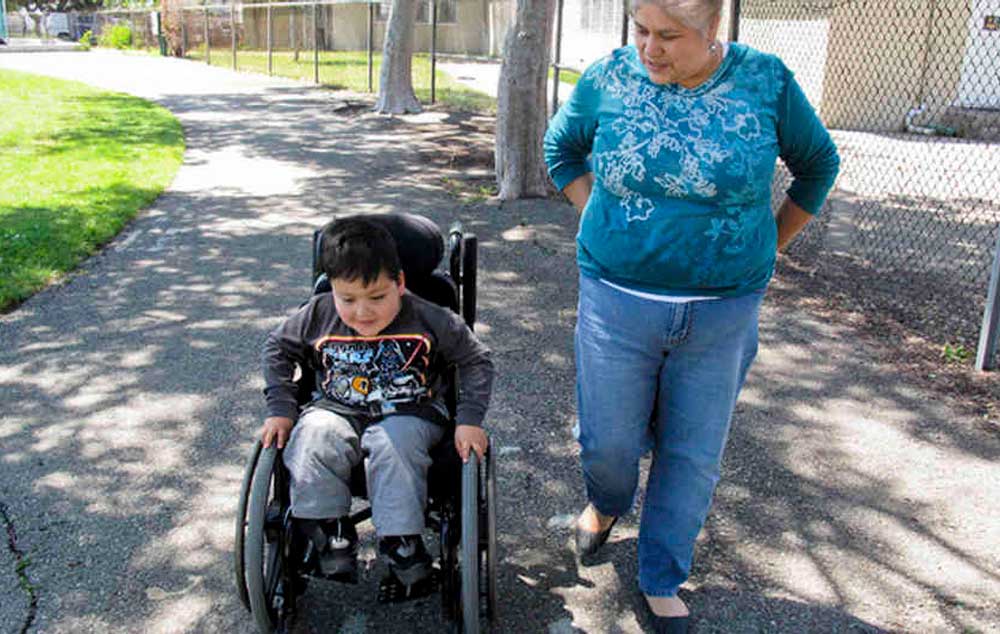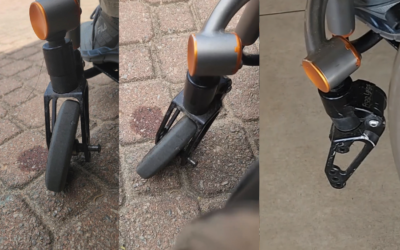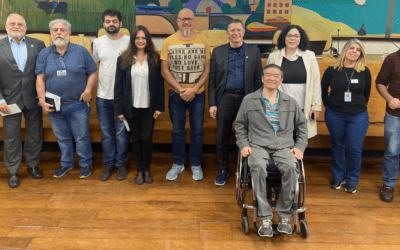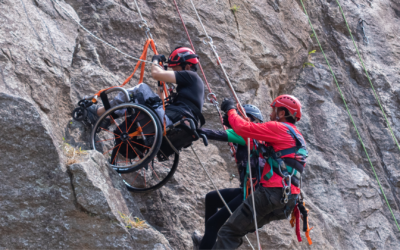
New Accessible Playground Rules May Not Go Far Enough
New Accessible Playground Rules May Not Go Far Enough. Last year, the federal government made accessibility standards at playgrounds mandatory under the Americans with Disabilities Act so that children with disabilities can more easily play alongside typical kids.
But whether children with disabilities are able to enjoy their new civil rights to play may depend on where they live, and the design decisions their cities and towns made when they built local playgrounds.
For 3-year-old Emmanuel Soto, who has spina bifida and uses a wheelchair, the local playground’s design doesn’t work.
On a recent afternoon, his parents, Teresa and Juan Soto, walk with Emmanuel to a play area near their home in Richmond, Calif.
As they arrive, the boy is excited to get there.
But the wheelchair he uses gets stuck on the playground’s floor. The surface is made of a type of loose wood fill that is in compliance with the new laws.
Emmanuel, however, really can’t move. So, his father lifts him out of his wheelchair and places him on a slide.
It’s a scene the family has played out before.
Teresa Soto fights back tears remembering that when Emmanuel was 2 years old, he quickly figured out that he couldn’t play with the other children here.
“He told me, ‘Mommy, I’m not able to play with the kids. Let’s go,’ ” she recalls. “I said, ‘Why? You wanted to come here.’ He said, no, let’s go, Mommy.’ “
In fact, there’s not much that Emmanuel can do by himself at this playground.
There are no ramps to take him onto the play structure, just a transfer system, which is made of a series of platforms and shallow steps.
A transfer system “basically requires me, if I’m a child who uses a wheelchair, to wheel up alongside of it, drag myself out of the wheelchair and transfer onto a platform,” says accessibility consultant John McGovern, “and then ascend until I get to the fun part of the playground that I can use.”
“It’s a pretty exhausting process,” McGovern says, “and not a lot of kids with physical disabilities can do it.”
Making Play A Civil Right
McGovern represented public parks and recreation departments on a federal regulatory negotiation committee.
The body helped draft accessible playground requirements that went into effect in March 2012.
He and others close to the process tell NPR that the committee made some compromises based on cost.
One of them was allowing those troublesome loose surfaces as an alternative to better, but more expensive, smooth surfaces. Another one was not requiring ramps on smaller playgrounds.
Still, McGovern says he’s glad the regulations moved from voluntary guidelines to requirements under the nation’s civil rights laws.
“To me this is no different than a public parks and recreation professional standing out in front of a recreation center and saying we don’t allow women in here, or we don’t allow Hispanics in here. It’s exactly the same concept.”
Meeting Playground Requirements
Richmond Parks and Landscaping Superintendent Chris Chamberlain says the city is technically in compliance with the Americans with Disabilities Act — at most of its playgrounds, and overall.
Many city playgrounds, like the one in the neighborhood where the Soto family lives, have those loose wood fiber surfaces, Chamberlain says.
The surfaces, he says, meet the ADA requirements for wheelchair access. But he acknowledges a gap between the regulations and individual needs. This particular surface may be too difficult for a child like Emmanuel to use.
“To expect [Emmanuel] to be able to wheel into, or even get pushed into and up to a transfer station and expect [him] to get up to and into the structure, that’s what I’m talking about. That’s the gap,” Chamberlain says.
Teresa Soto is disappointed in this park and the rest of her city’s playgrounds. When she can, she drives Emmanuel to a park in another town, 45 minutes away.
That’s not always possible, though. In the mornings, she works cleaning houses. Later in the day, she cares for Emmanuel’s sister, a teenager with Down syndrome.
Soto says she knows what she’d like to see in her neighborhood.
“I would like someone to tell me that in this place your son would be safe, that he would be in a fun place, with access for him,” she says.
Richmond recently won $7 million in grants for city park projects.
Chamberlain says the city is planning better play areas that will help children with more disabilities and more typical children play together.
Julie Caine of member station KALW contributed reporting from Richmond, Calif.
Source: npr
Compartilhe
Use os ícones flutuantes na borda lateral esquerda desta página
Siga-nos!
Envolva-se em nosso conteúdo, seus comentários são bem-vindos!
Artigos relacionados
Rodinha dianteira quebrada. Como lidar com um pronto socorro.
Rodinha dianteira quebrada. Imprevistos podem acontecer a qualquer hora em qualquer lugar, por isso o mais importante é saber lidar com eles.
Turismo acessível na política. Comissão do Turismo destaca a importância da acessibilidade.
Turismo acessível na política da Câmara Municipal de SP. Comissão do Turismo destaca a importância da acessibilidade para as PcD.
Teleton AACD. A pessoa com deficiência como protagonista.
Teleton AACD. A pessoa com deficiência como protagonista. Uma iniciativa internacional abraçada pelo SBT no Brasil.






0 comentários